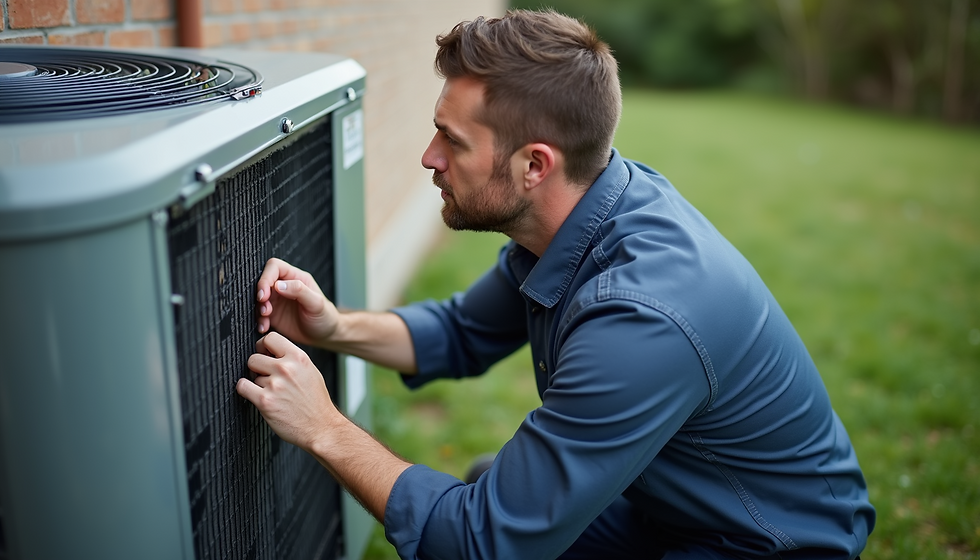Steps to Prepare Your Home for EV Charging Stations
- Thompson Electric & Air

- Jun 24
- 4 min read
As electric vehicles (EVs) gain popularity, many homeowners are considering installing EV charging stations in their garages or driveways. Preparing your home for EV charging is not just about plugging in your car. There are several important steps to take that ensure safe and efficient charging. This blog post outlines these steps in detail, helping you make informed decisions.

Understanding EV Charging
Before you start the preparation process, it's essential to understand the different levels of EV charging. Typically, there are three levels:
Level 1 Charging: Uses a standard 120-volt outlet. It is the slowest charging method, providing around 2 to 5 miles of range per hour.
Level 2 Charging: Uses a 240-volt outlet and is much faster, adding approximately 10 to 60 miles of range per hour. This is the most commonly recommended option for home installations.
DC Fast Charging: Primarily used in commercial settings, providing rapid charging for fleet vehicles and highways.
When planning your home EV charger installation, focusing on Level 2 charging is ideal for most residential needs.
Assessing Your Electrical System
The first step in preparing your home for an EV charging station is assessing your electrical system. Here are the key steps to follow:
Check the Main Electrical Panel: Ensure that your main panel has enough capacity to support an EV charger. Most Level 2 chargers require a dedicated circuit of 30 to 50 amperes. You might need an electrician to assess your panel's capacity.
Evaluate Circuit Breakers: Determine if your existing breakers can handle an additional load. Most older homes may require an upgrade to accommodate the new system.
Consider Electrical Upgrades: If your home's electrical service is insufficient, you may need to upgrade it. This could involve installing a new panel or increasing the amperage.
It's a good practice to gather data on your current electrical usage and assess where an EV charger would fit in without causing overload.

Can I install a home EV charger myself?
When it comes to home EV charger installation, many homeowners wonder if they can tackle the project themselves. While DIY electrical work can be rewarding, it's vital to consider safety and local regulations.
Understand Local Codes: Local governments often have specific codes and regulations regarding EV charger installations. Always check if you need permits or if you must adhere to building codes.
Skill Level: Installing an EV charger typically requires knowledge of electrical systems. If you are not comfortable working with electricity, it's best to hire a licensed electrician.
Manufacturer Guidelines: EV charger manufacturers often provide installation instructions. Follow them precisely to ensure safe and efficient operation.
In summary, while some homeowners might have the skill to install an EV charger, it is often best to consult with a professional to ensure that the installation is safe and code-compliant.
Choosing the Right EV Charger
Selecting the right EV charger is crucial and depends on several factors:
Charging Speed: Look for a charger that meets your driving needs. If you drive long distances frequently, a faster charger is better.
Smart Charging Features: Some chargers offer smart features, like remote access and monitoring via mobile apps. These can help you manage your charging schedules and potentially save on electricity costs.
Weatherproofing: If you plan to install your charger outdoors, ensure that it is weather-resistant and UL-rated for outdoor use.
Compatibility with Vehicle: Always ensure that the charger is compatible with your specific EV model. Check the connectors and charging standards.
It's essential to invest time in research to find a charger that best suits your lifestyle and budget.
Planning the Installation Location
Deciding where to install your EV charger is equally important. Here are some factors to consider:
Proximity to Parking: The charger should be located close to where you park your vehicle to avoid long cable runs. If you have a garage, that is typically the best location.
Accessibility: Ensure that the charger location is easily accessible for both your vehicle and any guests who may also own EVs.
Cable Management: Plan for how you’ll manage the charger cables. There are various cable management solutions, like hooks or reels, to keep the area tidy.
Extension Cords: Avoid using extension cords with your charger. They can be a safety hazard and might affect charging efficiency.
By taking the time to plan the location carefully, you can ensure a safe and convenient charging experience.

Final Considerations
Once you have assessed your electrical system, chosen a charger, and planned the installation location, the next phase involves working with a professional to complete the installation.
Regulatory Compliance: Work with your electrician to ensure that everything is up to code and meets local regulations. This step is critical to ensure safety and avoid future complications.
Testing the System: After installation, test the charging station to confirm that it works efficiently and safely. This includes checking the connection and charging speed to ensure everything operates as expected.
Educating Family Members: If you have family members who will also be using the charger, ensure they understand how to use it safely. Clear instructions can help prevent common issues.
In conclusion, preparing your home for EV charging requires careful planning and consideration. For a seamless process, consider hiring a professional for the installation to ensure safety and compliance. For more detailed resources on home EV charger installation, check out Our EV Page for more Info.
Preparing for an electric vehicle charging station may seem daunting, but with the right preparation and guidance, you'll be ready to plug in and drive efficiently into the future of sustainable transportation.







Comments